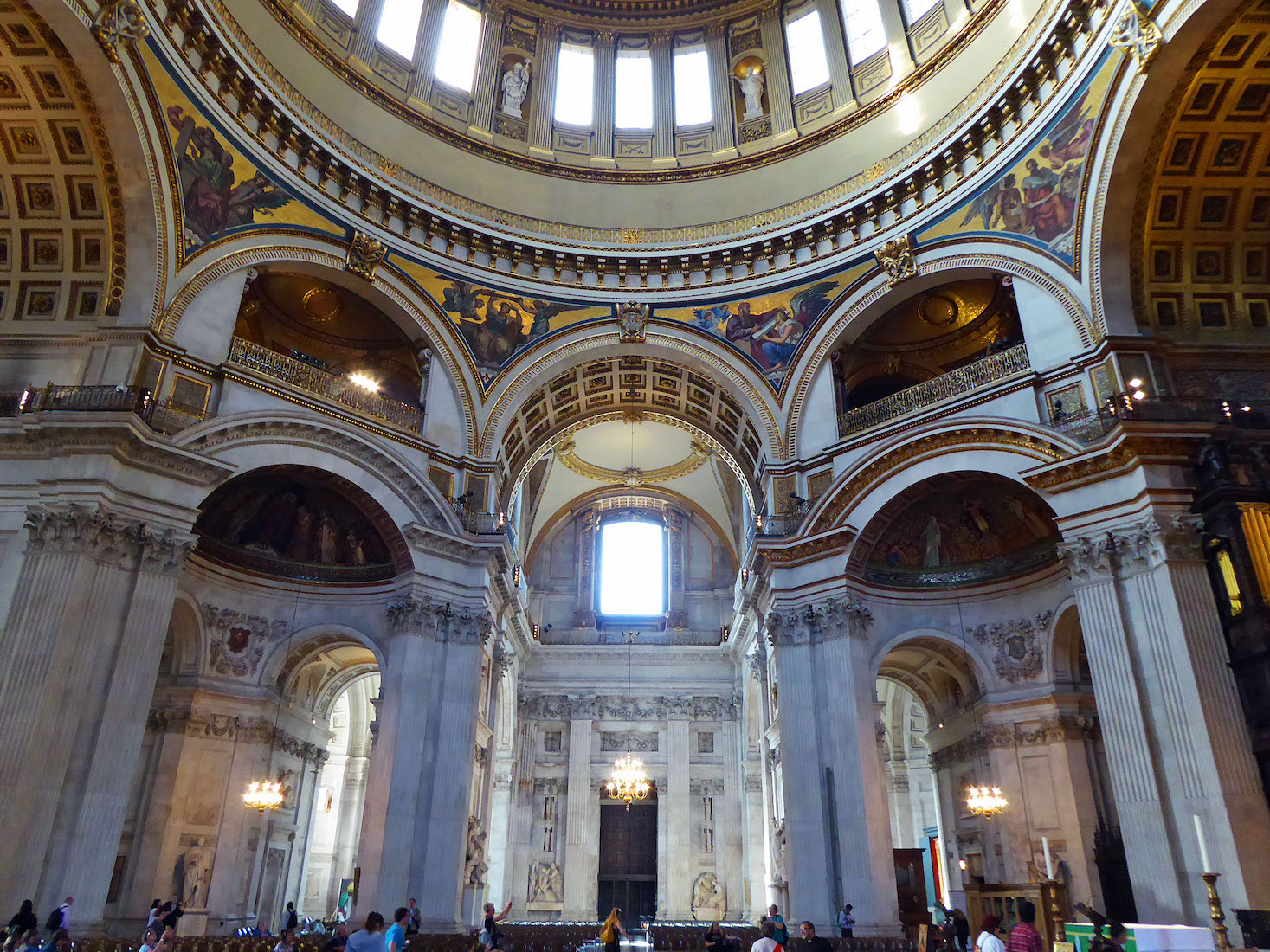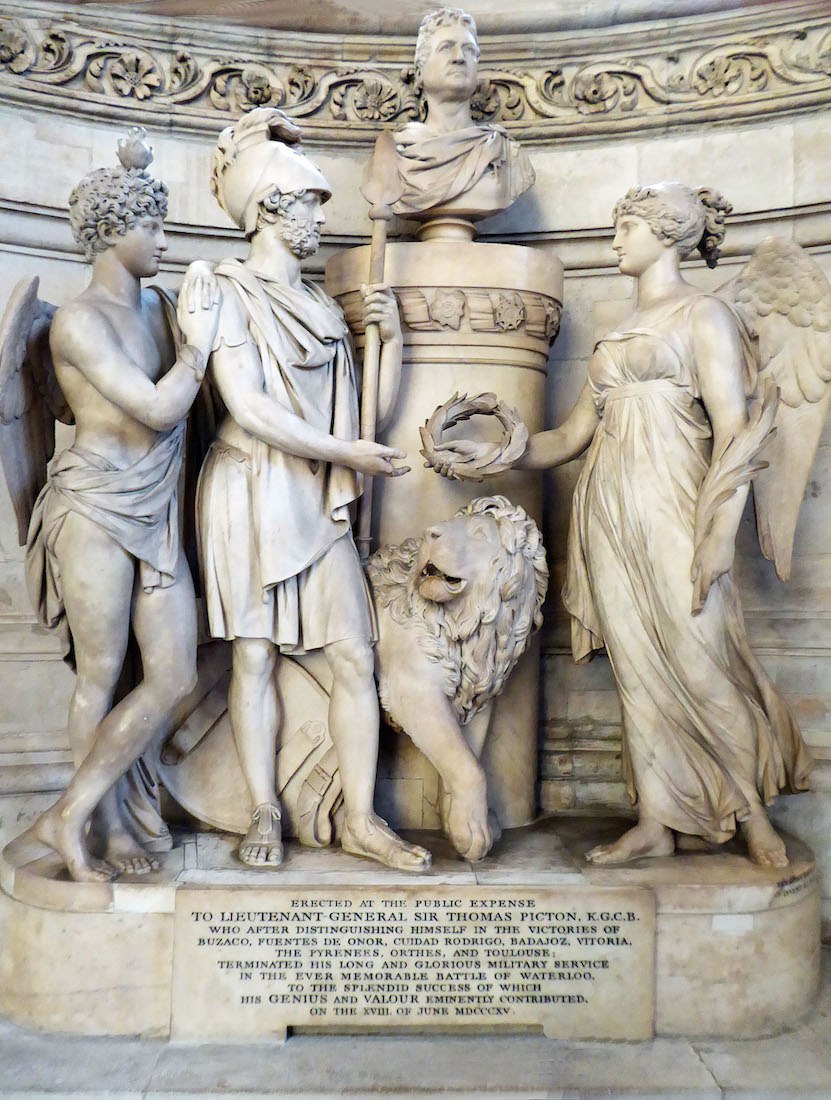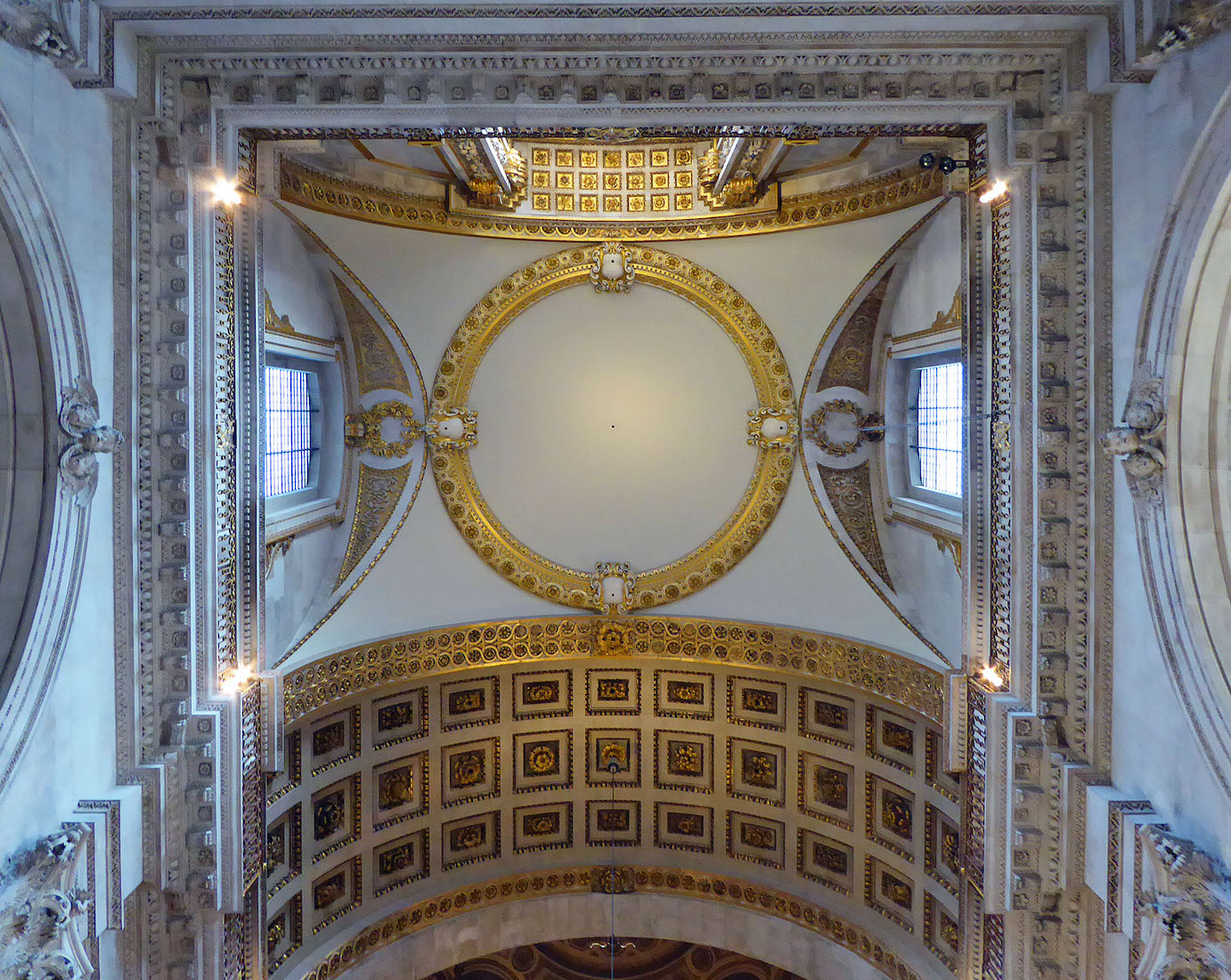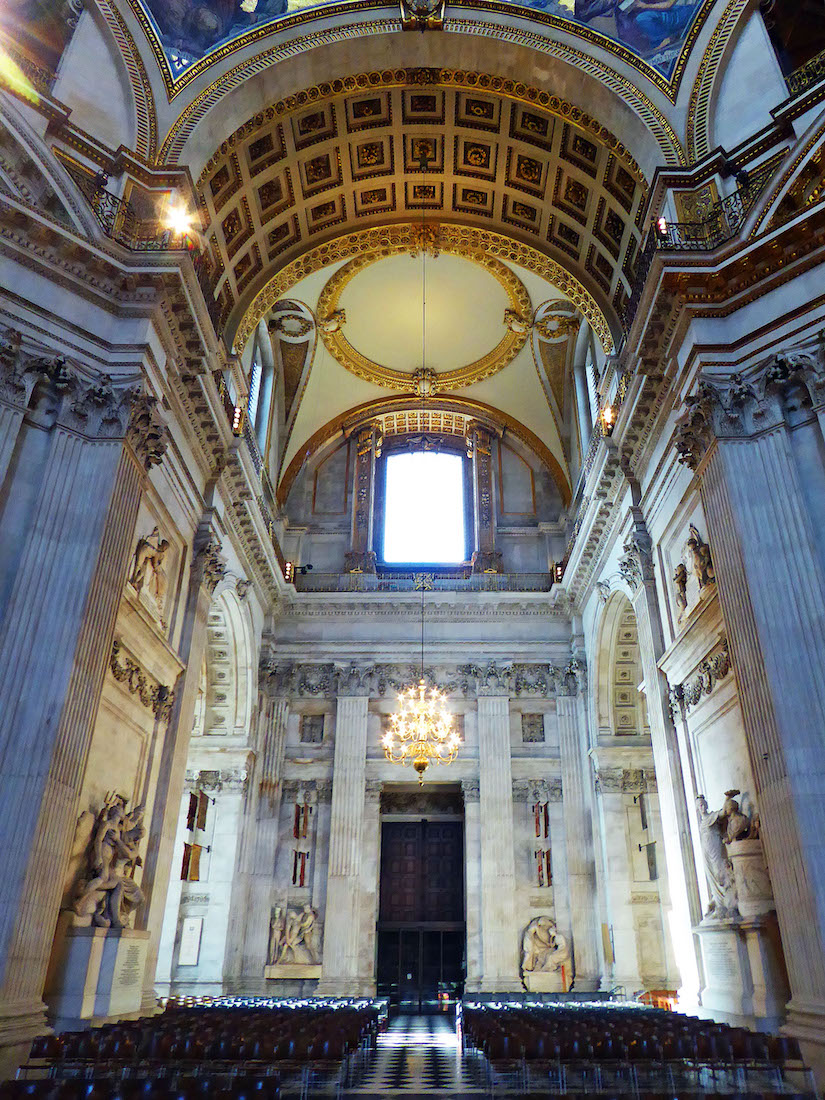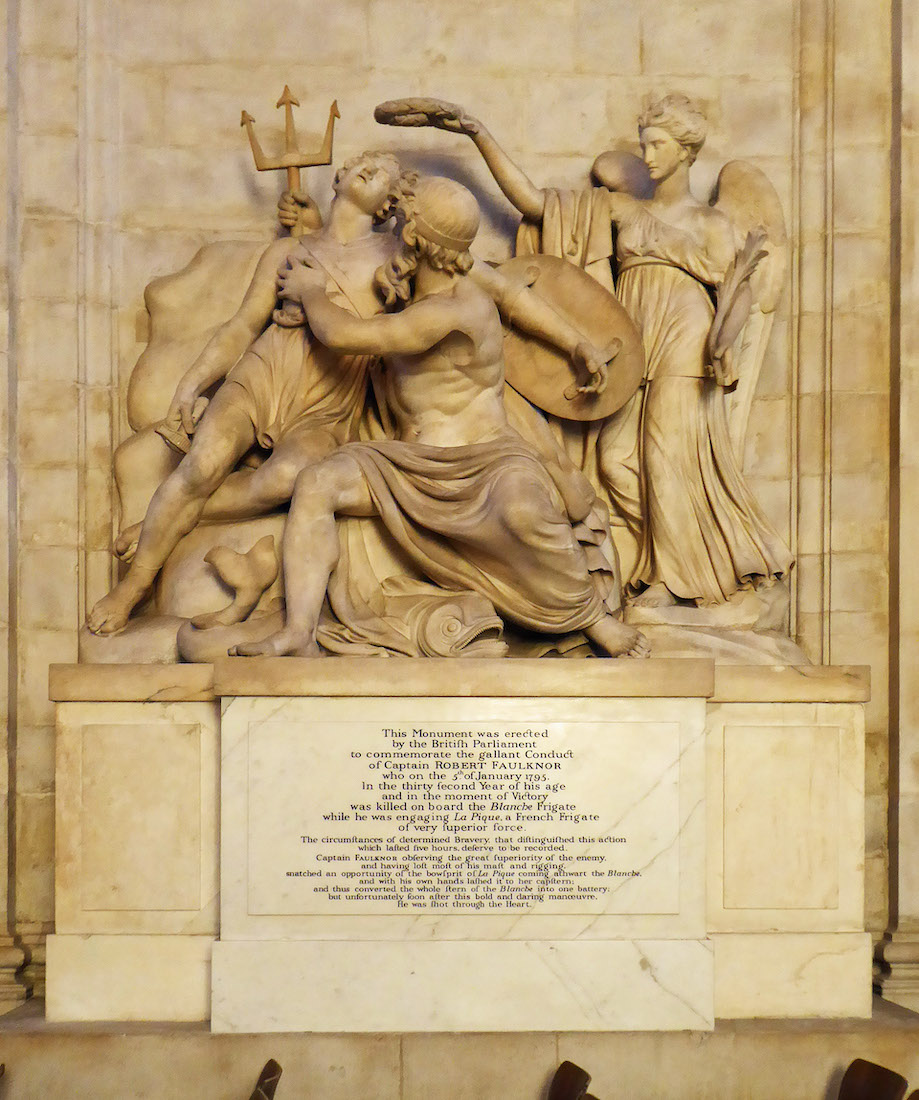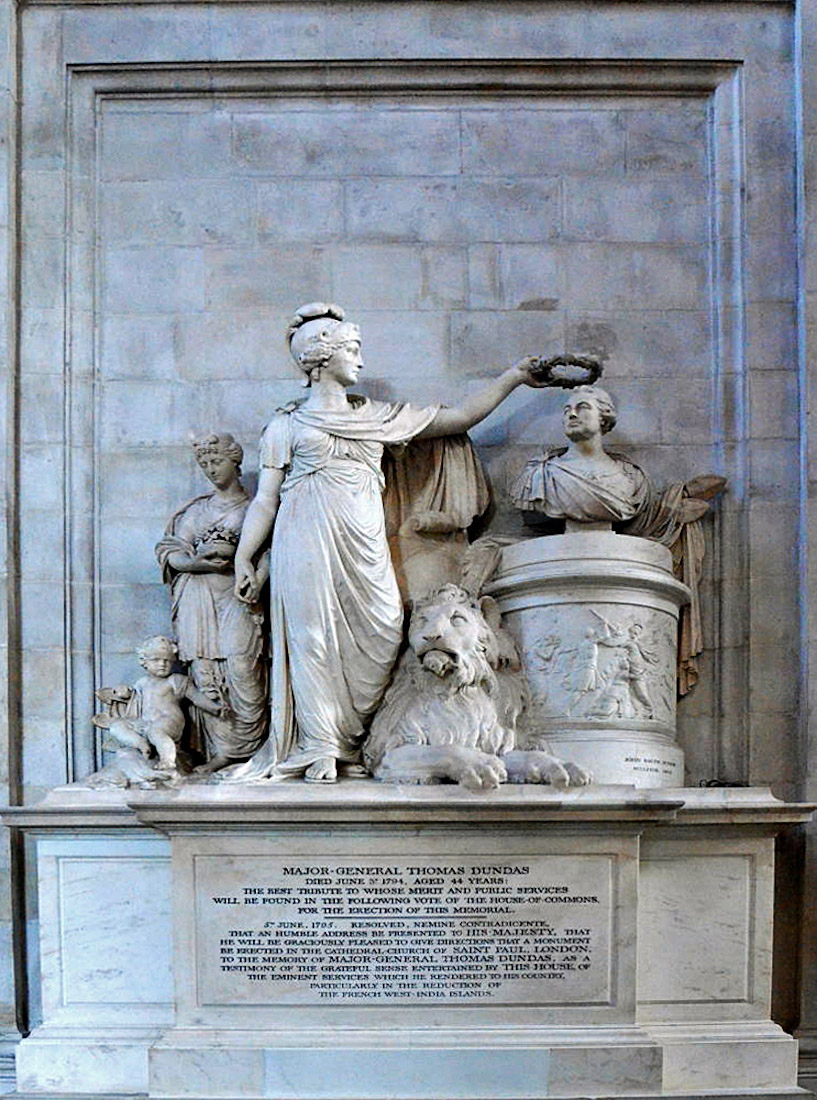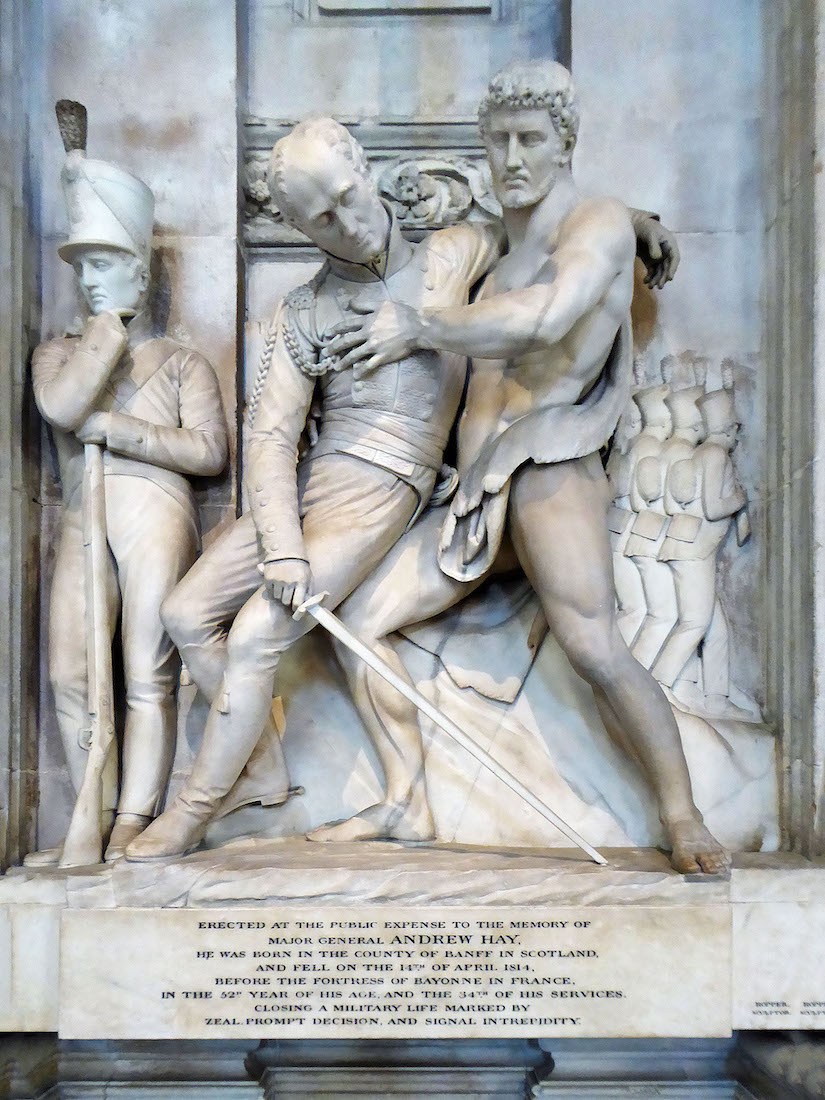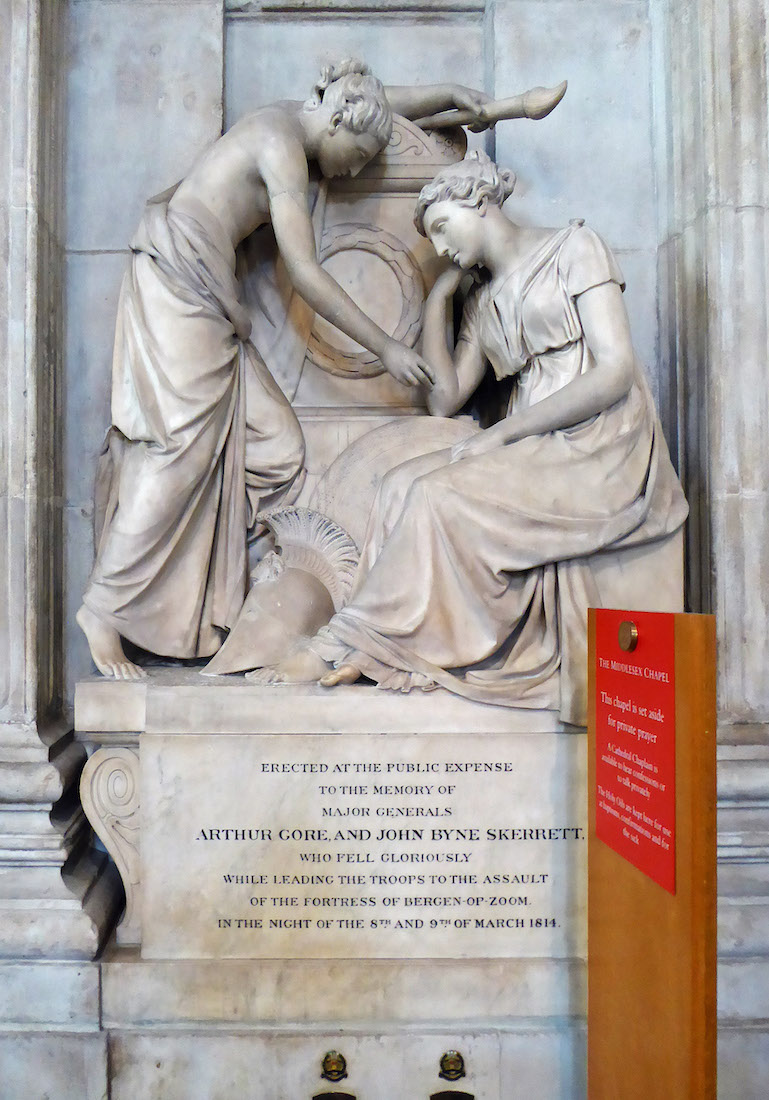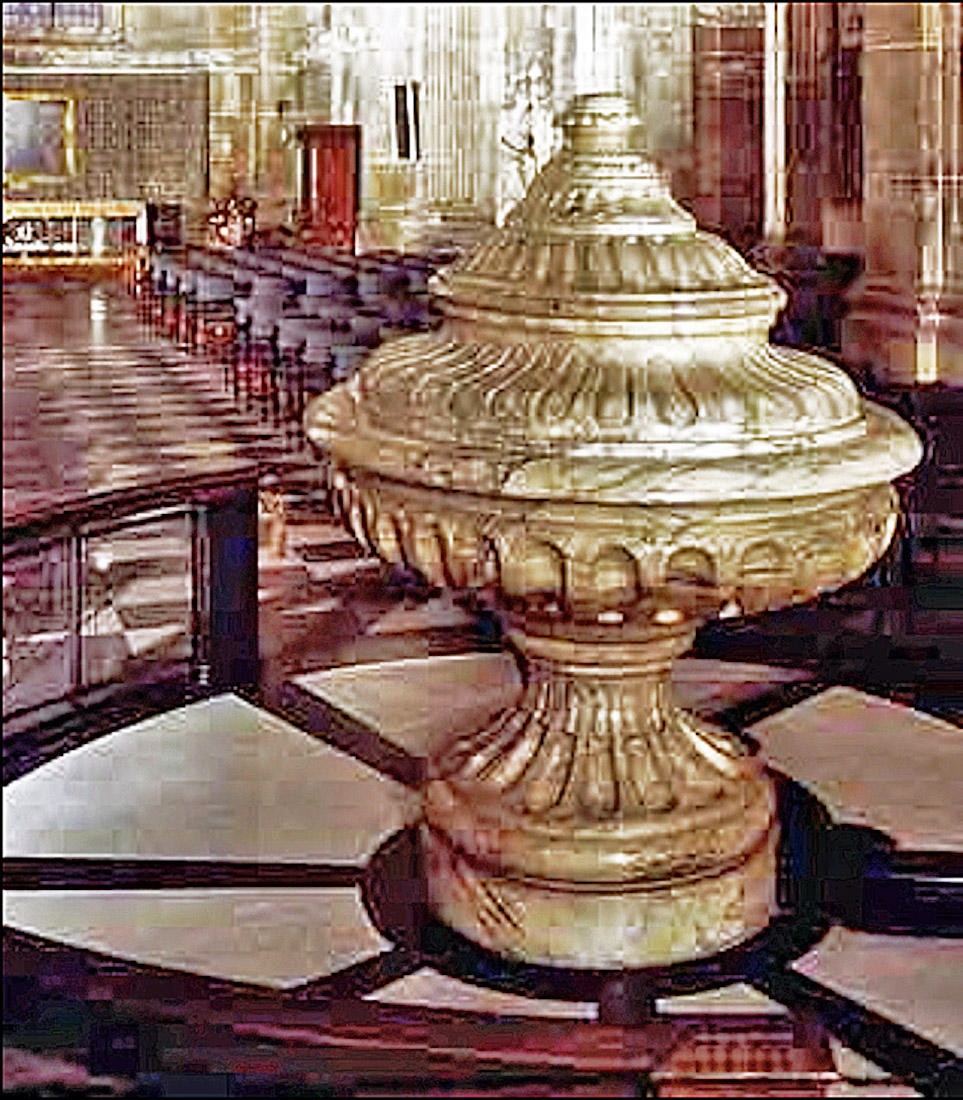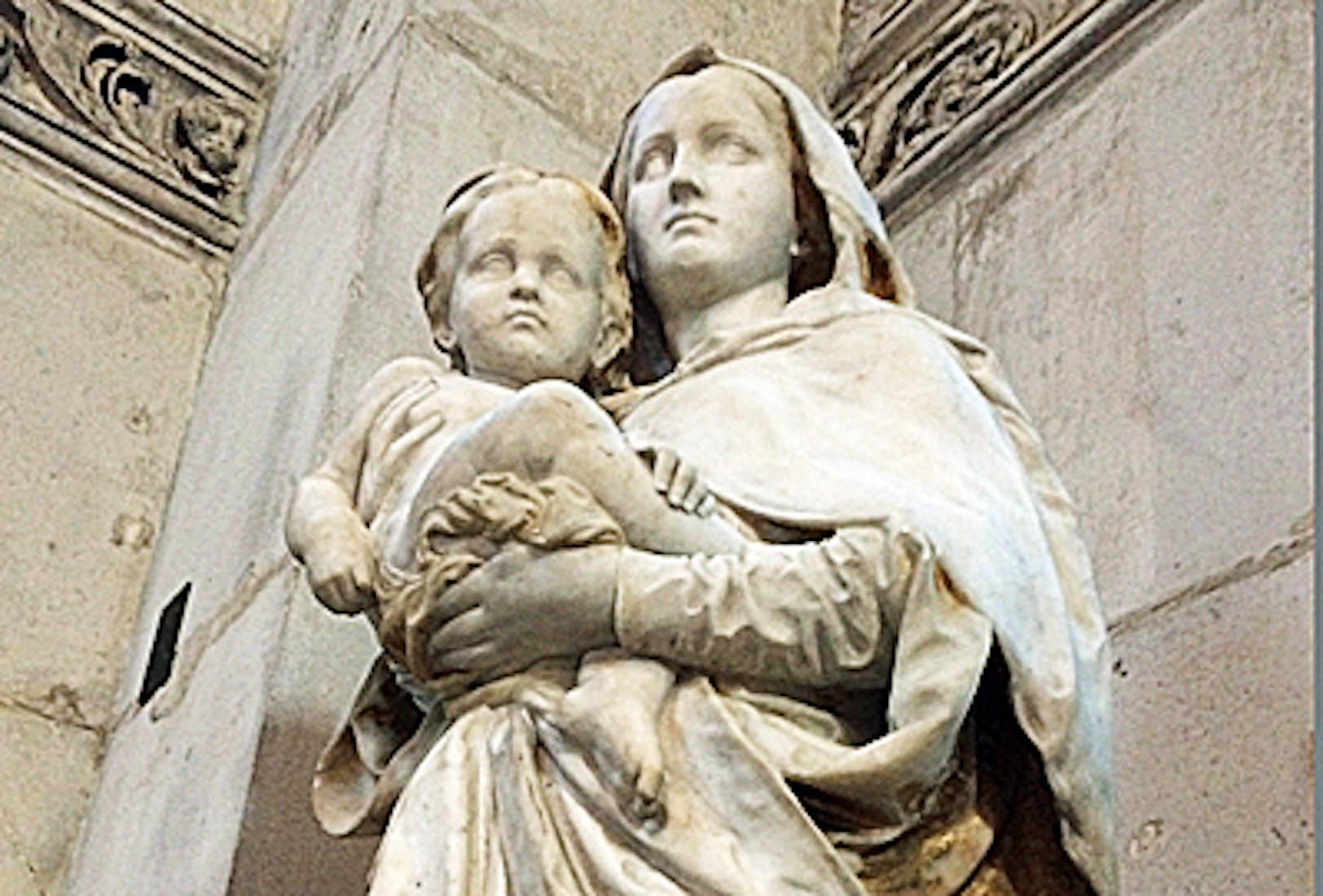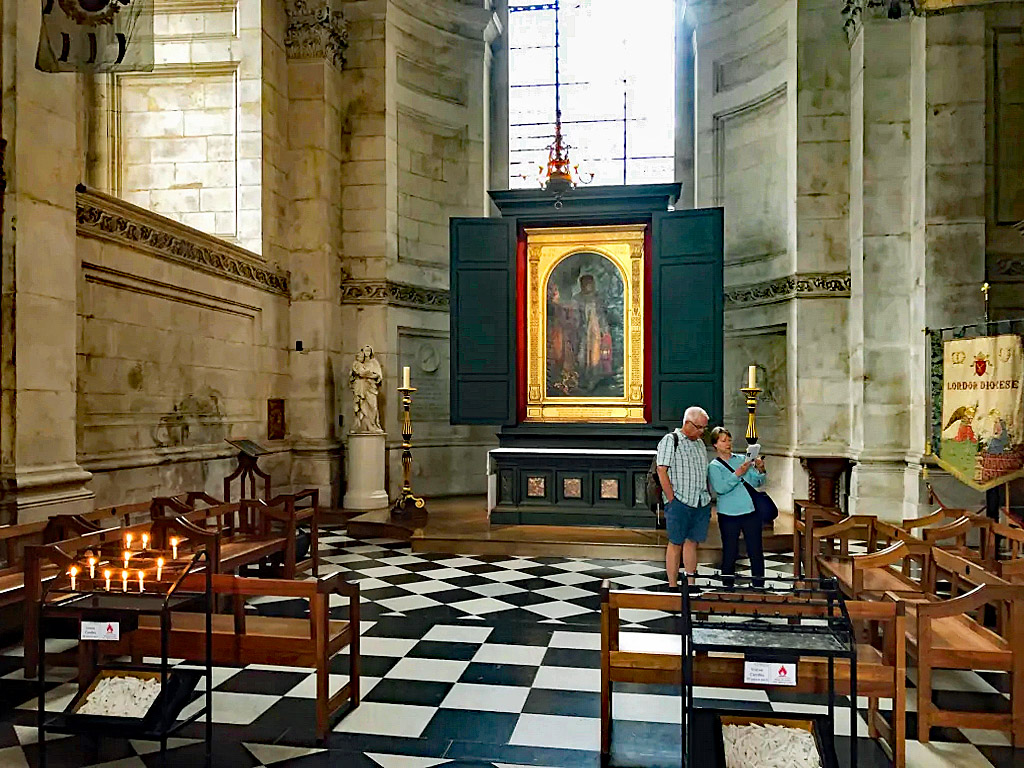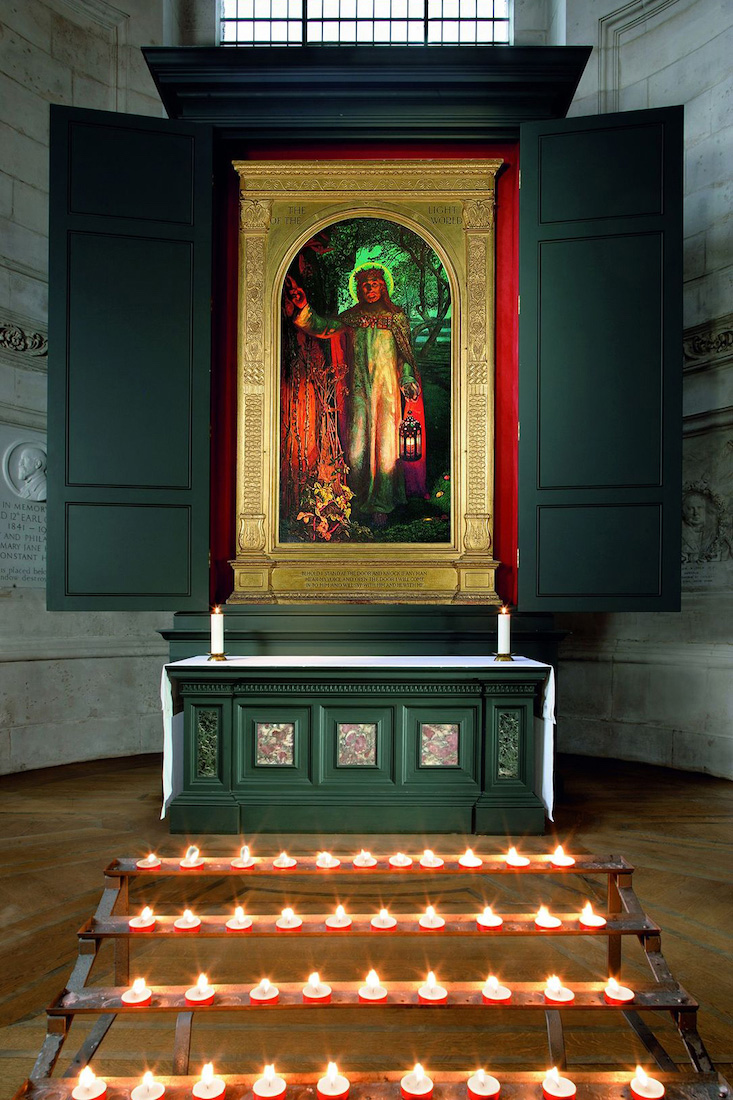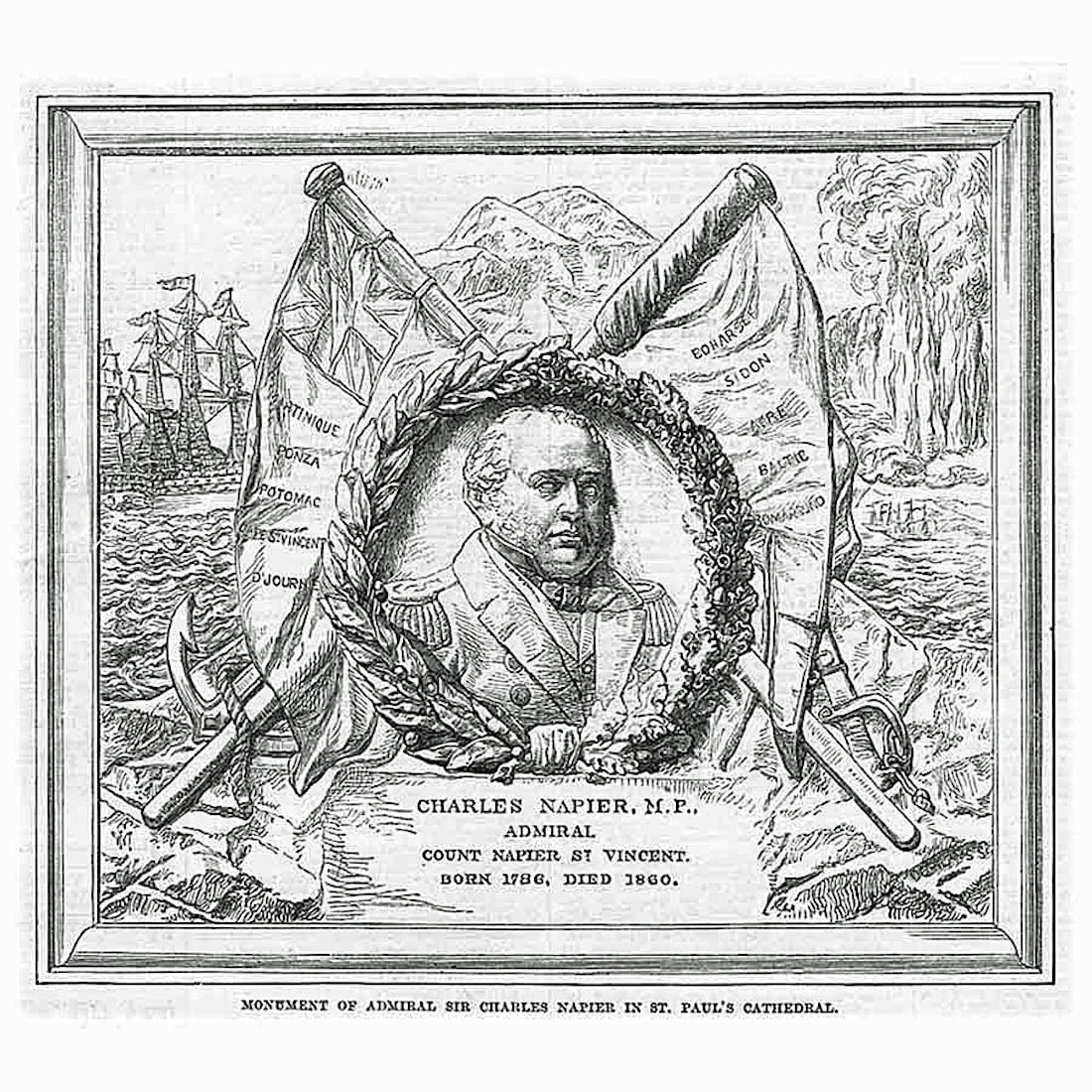NORTH TRANSEPT
NORTH TRANSEPT PLAN
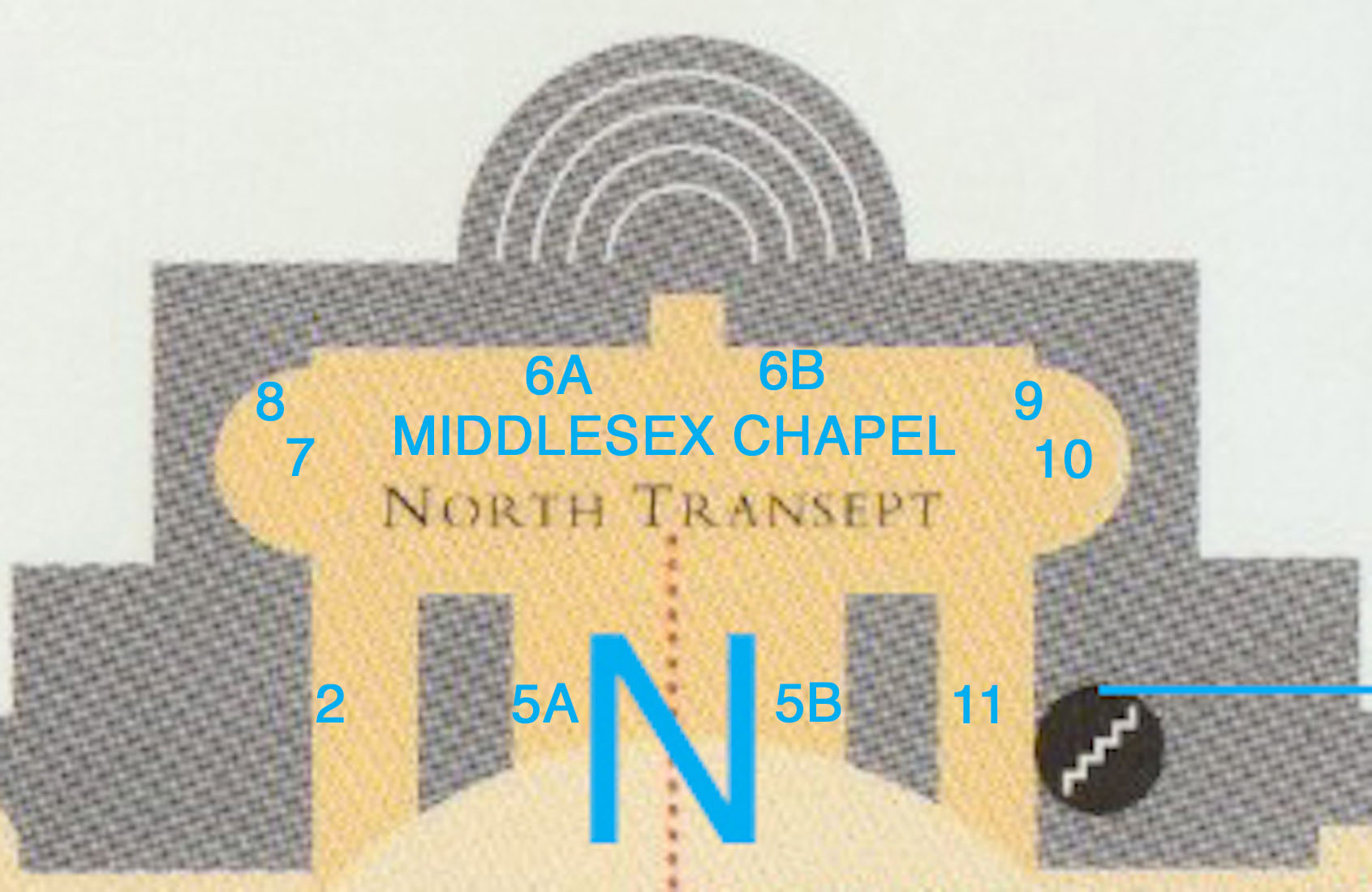
We leave the round crossing area and move to the North transept. The Northern end of the transept is designated the Middlesex Chapel (also known as the Chapel of St Erkenwald and St Ethelburga). It has various features including a font (another font!) [7] at one end, and Holman Hunt’s famous painting ‘The Light of the World’ [10] at the other. The transept is very wide but shallow, with the round crossing to the South separated from the Middlesex Chapel by single wide pillars. The pillars define a central space (the transept ‘nave’) and two side aisles. INDEX
N1. NORTH TRANSEPT AMT
This is the North transept as seen from the crossing. To either side there is a statue (the right one behind a candle). We have already looked at these, as part of the crossing. In the right (East) aisle, there is a large dark organ, which serves the Middlesex Chapel. We first walk up the aisle to the left (the West aisle) where there is one significant statue, in a wall niche.
N2. WEST AISLE: PICTON MONUMENT AMT
This is the Picton Monument. Lieutenant-General Sir Thomas Picton GCB (1758 – 1815) was a Welsh officer of the British Army who fought in the Napoleonic Wars. He died in the Battle of Waterloo. Various towns around the world are named after him.
N3. NORTH TRANSEPT ‘NAVE’ ROOF AMT
We retrace our steps and stand in the transept ‘nave’. The vaulting above is elaborately decorated in gold. Most of the Cathedral windows have plain glass. In this photograph, I am curious about the four little black dots in and around the central dome. Spot lights? Smoke detectors? Security?
N4. NORTH TRANSEPT ‘NAVE’ AMT
Surrounding this central space are four statues – two on the side walls, and two on the far wall of the Middlesex Chapel. As well, we notice here the hanging colours of the Chapel. The Regiment existed from 1881 to 1966, after which it was amalgamated with various other regiments. It is a long standing practice for the colours of disbanded regiments to be displayed in churches and cathedrals.
N5. FAULKNOR AND DUNDAS MONUMENTS AMT VW
These two monuments stand to the sides of the North transept ‘nave’. On our left is a monument to Robert Faulknor the younger (1763–1795), who was an 18th-century Royal Navy officer, part of the Faulknor naval dynasty. He was court-martialled (but acquitted) and died in an action off Guadeloupe in the eastern Caribbean Sea. To our right is a monument to Thomas Dundas (1741 – 1820), 1st Baron Dundas FRS, also known as Sir Thomas Dundas, 2nd Baronet from 1781 to 1794. He was a Scottish politician who sat in the House of Commons from 1763 to 1794, after which he was raised to the peerage as Baron Dundas. [Right Photo Credit: Victorian Web]
N6. HAY AND GORE/SKERRETT MONUMENTS AMT AMT
On the wall ahead are two further monuments. At left is a memorial to Major General Andrew Hay (1762 – 1814), who was a British Army officer who served in the American Revolutionary, French Revolutionary and Napoleonic wars. He was mortally wounded at the siege of Bayonne on 14 April 1814. At right is a memorial to Arthur Gore and John Skerrett. John Byne Skerrett (1777 – 1814) was a British soldier who fought in the Spanish War of Independence. He was a brigade commander under Sir Thomas Graham in the Netherlands from 1813 to 1814 and died in the assault on Bergen op Zoom in 1814. Arthur Gore was a Major-General who gave his life in the same battle.
N7. FONT AMT
At the West end of the North Transept is a large marble font. It was carved in 1726-1727 at a cost of £350 by Francis Bird. •• There are a number of historic reliefs around the walls. This Crimean memorial is on the West wall behind the font. The panel has a central figure of an angel, and rows of mourning soldiers. The memorial commemorates the lives of 15 officers who gave their lives.
N8. CRIMEAN MEMORIAL AMT
There are a number of historic reliefs around the walls. This Crimean memorial is on the West wall behind the font. The panel has a central figure of an angel, and rows of mourning soldiers. The memorial commemorates the lives of 15 officers who gave their lives.
N9. MIDDLESEX REGIMENTAL CHAPEL NP
From near the font we can look down the length of the Middlesex Regimental Chapel to the altar with the two large candlesticks. Of particular interest here is the statue of Virgin and Child, and the Holman Hunt painting ‘The Light of the World’. [Photo Credit: Nick Pangere]
N10. VIRGIN AND CHILD AMT
There are two items of interest at the Eastern end of the Chapel. One is this Victorian-era marble statue of the Virgin and Child which was removed from the Cathedral following the bombing during World War II. It was the work of Thomas Garner, and part of an ornate high altar and reredos installed at the Cathedral’s East end in 1888. It was put into storage after that part of the cathedral took a direct hit during the Blitz of 1940 and what remained of the altar was dismantled. (The statue and a crucifix were the only parts retained by the Cathedral). It was placed back in the Middlesex Chapel in 2015.
N11. HOLMAN HUNT PAINTING SPC
The famous painting ‘The Light of the World’ hangs in the Side Chapel of the Transept. It is the original by William Holman Hunt, painted in 1853. The Light of the World was begun when Holman Hunt was in his early twenties, and took a number of years to complete.
12. NAPIER RELIEF SPC
We leave the Middlesex Chapel and walk back along the East aisle of the transept to the crossing. Various reliefs line the walls, including a bronze to Sir Arthur Sullivan (1900), a memorial to Sir John Stainer (1902), and this relief remembering Admiral Sir Charles John Napier KCB GOTE RN (1786 – 1860). Napier was a British naval officer whose sixty years in the Royal Navy included service in the War of 1812, the Napoleonic Wars, Syrian War and the Crimean War (with the Russians), and a period commanding the Portuguese navy in the Liberal Wars. He was an innovator concerned with the development of iron ships, and an advocate of humane reform in the Royal Navy. He was also active in politics as a Liberal Member of Parliament and was probably the naval officer most widely known to the public in the early Victorian Era. [Sketch Credit: St Paul’s Cathedral] • Steps to the crypt lead down from this aisle, but we don’t take these.


